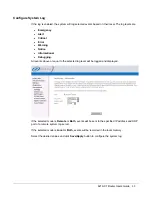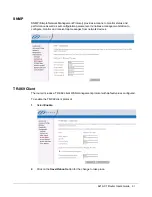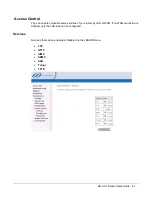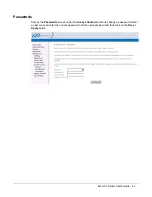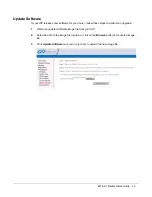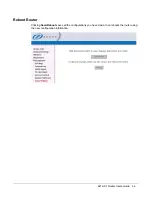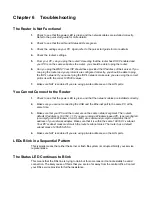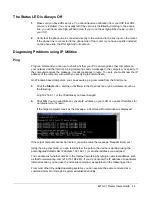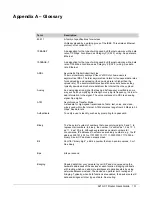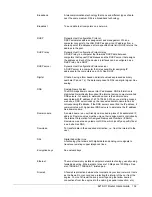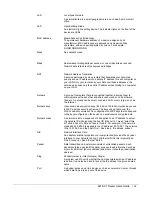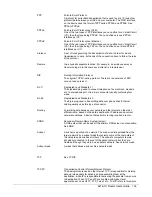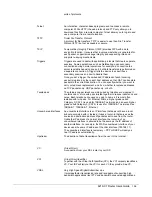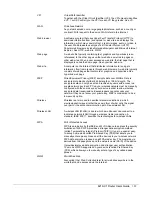
but if something happens to your engine, you are protected.
The firewall in the router is very similar. Only the connections that you
allow are passed through the firewall. These connections normally
originate from the local network, such as users web browsing, checking e-
mail, downloading files, and playing games. However, you can allow
incoming connections so that you can run programs like a web server.
FTP
File Transfer Protocol
A program used to transfer files between computers connected to the
Internet. Common uses include uploading new or updated files to a web
server, and downloading files from a web server.
Gbps
Abbreviation of Gigabits per second, or one billion bits per second.
Internet data rates are often expressed in Gbps.
Host
A device (usually a computer) connected to a network.
HTTP
Hyper-Text Transfer Protocol
HTTP is the main protocol used to transfer data from web sites so that it
can be displayed by web browsers. See web browser, web site.
Hub
A hub is a place of convergence where data arrives from one or more
directions and is forwarded out in one or more directions. It connects an
Ethernet bridge/router to a group of PCs on a LAN and allows
communication to pass between the networked devices.
ICMP
Internet Control Message Protocol
An Internet protocol used to report errors and other network-related
information. The ping command makes use of ICMP.
IEEE
The Institute of Electrical and Electronics Engineers is a technical
professional society that fosters the development of standards that often
become national and international standards.
Internet
The global collection of interconnected networks used for both private and
business communications.
Intranet
A private, company-internal network that looks like part of the Internet
(users access information using web browsers), but is accessible only by
employees.
IP See
TCP/IP.
IP address
Internet Protocol address
The address of a host (computer) on the Internet, consisting of four
numbers, each from 0 to 255, separated by periods, e.g., 209.191.4.240.
An IP address consists of a network ID that identifies the particular
network the host belongs to, and a host ID uniquely identifying the host
itself on that network. A network mask is used to define the network ID
and the host ID. Because IP addresses are difficult to remember, they
usually have an associated domain name that can be specified instead.
See domain name, network mask.
ISP
Internet Service Provider
A company that provides Internet access to its customers, usually for a
fee.
6219-X1 Router Users Guide
103
Summary of Contents for 6219-X1
Page 1: ...6219 X1 ADSL2 4 Port Router Users Guide Document Part Number 830 02072 02 February 2010...
Page 10: ......
Page 41: ...6219 X1 Router Users Guide 41...
Page 100: ......


